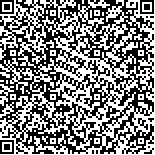| This article has been:Browse 1561Times Download 2472Times |

scan it! |
|
|
| DOI:10.13522/j.cnki.ggps.2020146 |
|
| The Effects of Depth of Subsurface Dual Emitters in Surge-root Irrigation on Water and Nitrogen Movement in Red Soil |
|
DAI Zhiguang, CAI Yaohui
|
|
1. School of Hydraulic and Ecological Engineering, Nanchang Institute of Technology, Nanchang 330099, China;
2. Institute of Soil and Water Conservation, Northwest A&F University, Yangling 712100, China;
3. Institute of Soil and Water Conservation, Chinese Academy of Sciences and Ministry of Water Resources, Yangling 712100, China
|
| Abstract: |
| 【Background】The red soil widely distributed in hilly regions in southern China is an important soil resource, but the seasonal drought in these regions and the inherent acidity, stickiness and leanness of the red soil could impede crop growth. Surge-root irrigation (SRI) is a technology capable of ameliorating these problems and improving agricultural production in these regions. Understanding the movement of water and nitrogen in the soil under SRI is essential to improving its efficacy.【Objective】The purpose of this paper is to experimentally study the impact of burying depth of the dual-emitters in SRI on water and nitrogen movement in the red soil in attempts to provide a guidance for improving nitrogen utilization efficiency in these regions.【Method】The experiment was conducted in field with calcium ammonium nitrate as the nitrogen fertilizer; the emitters were buried at depth of 30, 45, or 60 cm, respectively. For each treatment, we measured water infiltration from the emitters, movement of the wetting fronts, spatiotemporal changes in soil moisture, ammonium and nitrate, from which we derived formulae to calculate the changes in cumulative infiltration and location of the wetting front with time.【Result】When the emitter depth was 30, 45 and 60 cm, the cumulative infiltration and the stable infiltration rate were 18.84 L and 0.035 cm/min, 17.09 L and 0.031 cm/min, and 14.37 L and 0.024 cm/min, respectively, indicating that the deeper the emitters were, the less the cumulative infiltration and stable infiltration rate were. The cumulative infiltration increased with time in a power-law, and when the emitters depth was 30, 45 and 60 cm, the time it took the wetting fronts emanating from the two emitters to cross was 168, 187 and 197 min, respectively. The migrating distance of the wetting front increased with the buried depth of the emitters, and it was related to irrigation time logarithmically. Vertically, soil moisture content (SWC), ammonium and nitrate all increased first and then decreased. Horizontally, both SWC and ammonium were the highest in the proximity of the emitters and the lowest at a location 12.5 cm from the emitters. In contrast, the nitrate distribution varied significantly with the burying depths of the emitters.【Conclusion】The burying depth of the emitters in the SRI had significant effects on water and nitrogen transport in red soils. Burying the emitters deeper than 60 cm could risk nitrogen leaching to groundwater and should be avoided. |
| Key words: red soil; surge-root irrigation; emitter depths; water and nitrogen transport |
|
|